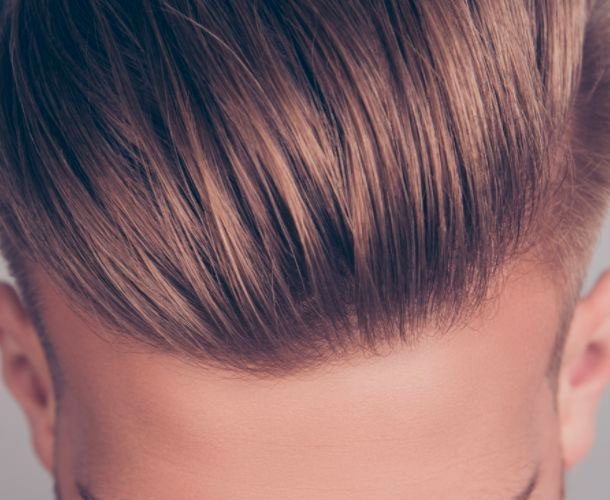BOTOX® WILMSLOW

For leading and safe, medic-led botox treatment in the Wilmslow area, visit Doctor Nyla’s medispa.
As we age, wrinkles become more defined across our skin as we naturally lose elasticity. Doctor Nyla suggests the best time to consider Botox is when you notice these expression lines are present even when static.
When we inject Botox into the skin, it blocks the nerve endings from releasing a chemical that causes muscles to contract. This means the muscles are relaxed and the appearance of fine lines and wrinkles is reduced.
At Dr Nyla’s medispa, we provide Botox injections and anti-wrinkle treatments to our customers in Wilmslow and the surrounding areas.
BOTOX® TREATMENT AR
How long does it take to have an anti-wrinkle injection?
How long is recovery time?
EAS

Ideal areas for treatment are those wrinkles caused by a muscle that doesn’t have a particularly significant function such as the crows’ feet the frowning muscles and the muscles that elevate the brow.
The best time to consider having Botox® is when you begin to notice that your dynamic lines (these are the wrinkles that only appear through expression) appear regardless of expression and form even when static.
This usually happens in your mid 30’s but of course, varies depending on each person, their lifestyle, and environment. Botox® works best at this stage, rather than with deeply etched lines, which are more difficult to smooth the appearance of later on.
Botox remains one of the most affordable, fastest working safe and effective non-surgical, anti-ageing treatments available and is one of our most popular treatments in the Wilmslow area.
SAFE BOTOX® WILMSLOW
All Botox® treatments for Wilmslow customers at Medispa Cheshire are performed only by the most experienced doctors and nurses as patients’ safety is paramount.
Dr Nyla is one of the most successful aesthetic clinics around Wilmslow, with exceptional patient satisfaction. This is why our clients continue to return to our medispas.
Botox can be safely used to optimise results with other non-surgical lifting and tightening treatments include Ultherapy, M22 Laser and Exilis Elite. These treatments will complement and simultaneously tighten the surrounding skin as the botox serves to soften the lines and wrinkles giving you a very natural improved refreshed appearance.
If you live in Wilmslow, or the surrounding areas, Doctor Nyla’s experienced and friendly staff should be your first port of call if you’re interested in understanding more about Botox.
Nerve endings release a chemical substance, acetylcholine, which transmits contraction information to the muscle. Botox is a type A botulinum toxin whose role is to temporarily block the release of acetylcholine. The muscle is then relaxed and the wrinkles is reduced.
Frown lines are caused by the contraction of three muscles, the procerus, located between the eyebrow, and the corrugators above each eyebrow. Botox is injected into these different muscles that cause the line. The frontails and orbicularis muscles can also be injected.
Depending on the amount of areas being treated, a Botox appointment can be done in as little as 15 minutes.
Botox lasts for three to six months depending on the client.
During a Botox treatment, Doctor Nyla will use her specially developed technique to administer a controlled amount of Botox into the patient using a small needle. An optional numbing cream is available, but the procedure is relatively pain free.
Botox results can be seen after a few days, with the full effect becoming visible in around 2 weeks.
There is no downtime with Botox, although patients may be advised to stop taking medications such as aspirin prior to the appointment to minimise chances of bruising.
The best time to consider having Botox® is when you begin to notice that your dynamic lines (these are the wrinkles that only appear through expression) appear regardless of expression and form even when static. This usually happens in your mid 30’s, however it differs from person to person dependant on genetic and lifestyle factors such as sun exposure, stress, cigarette smoking and other environmental factors. Botox® works best at this stage, rather than with deeply etched lines, which are more difficult to smooth the appearance of later on.
The longer you wait, the more invasive the treatments for wrinkles become – for example dermal fillers are used when Botox® will not suffice. Botox can be used prophylactically to prevent the appearance of wrinkles becoming etched into the skin ESP if there is a clear genetic predisposition already noted.
Areas that Botox can treat include:
Frown lines – forehead and area between the brows
Crow’s feet – around eyes
Bunny lines – on the bridge of the nose
Necklines – horizontal ‘necklace lines’ and vertical ‘platysmal bands’ (Nefertiti Neck Lift)
Marionette lines
Medical conditions – such as migraines, excessive sweating and facial flushing
Botox can stop migraines before they even start, with treatments recommended every twelve weeks for maximum effect. This works by blocking the release of the neurotransmitters that are associated with causing pain, meaning that you no longer have to experience the severe pain of a migraine.
Botox can help with excessive sweating by blocking the signals that the body sends to stimulate sweat glands. It is injected into the skin, and the effects last for 3-6 months.
Botox can treat blushing of the face, neck and chest by blocking the signals between nerve cells that reach the skin and blood vessels. For those who suffer from anxiety and are embarrassed by their blushing, Botox can bring back confidence and significantly improve quality of life by removing this worry altogether.
Some people are self conscious about the amount of teeth and gum that is revealed when they smile. Botox can be used to minimise this by relaxing the muscle above the upper lip, restricting it from lifting as high.
Botox can treat horizontal ‘necklace lines’ and vertical ‘platysmal bands’ in the neck with a treatment known as the Nefertiti Neck Lift, restoring a tighter and youthful appearance of the skin on the neck.
– Tell your Doctor if you are suffering from any illness and inform them if you are taking any medication. These may affect treatment with Botox.
– To avoid bruising do not take aspirin or anti-inflammatories prior to treatment.
– Tell your doctor if your are pregnant or breastfeeding.
– Tell your doctor if you have had any problems in the past with previous injections botulinum toxin or with injections in general.
– Tell your Doctor if you have any inflammation in the muscles or skin where your Doctor plans to inject.
– Tell your Doctor if you have had any problems swallowing.
– Tell your Doctor if you have had any surgery that may affect the area to be injected or if you have any pending operations.
Botox comes in the form of a vial, botulinum toxin in powder form. Your Doctor will dilute this powder by adding saline solution.
Once reconstituted, your Doctor will draw up the necessary amount using the syringe. After disinfecting your skin (and making the injections sites) your Doctor will inject the treatment at several points into the muscles.
As with any medicine, the injection of Botox may cause side affects un some patients. Do not worry when you read this list of side effects in some patients. Do not worry when you read this list of side effects , you may not have any. Side effects usually occur within the first few days of injection and are temporary. The most common side effect are headache, drooping of the eyelid, skin redness, local muscle weakness and facial pain.
Other side effects may be associated with the injection (bruising, redness, pain, burning, stinging, swelling). Adverse reactions possibly related to the spread of toxin distant from the side of administration have been reported very rarely with botulinum toxin (e.g muscle weakness, difficulty swallowing or pneumonia due to unwanted food or liquid in the airways).
Be certain to adhere to the following post-treatement instructions:
CLEAN – Use a gentle cleanse and tepid water to cleanse the face of the following 72 hours and gently dry the treated skin. Always make sure that your hands are clean when touching the treated area.
HEAL – Serum antioxidants are recommended post-treatment as the properties are ideal to help heal the skin. These products can help smooth the skin lessen irritation.
HYDRATE – Following your treatment, your skin may feel drier than normal . Hyaluronic Acid is an ideal ingredient to hydrate and restore the skin back to perfect balance.
MAKEUP – It is recommended that makeup should not be applied for 24 hours after the procedure. Do not apply any makeup with a makeup brush, especially if it is not clean.
To ensure the proper healing environment, be certain to observe the following:
– For at least three days post treatment =, do NOT use any Alpha Hydroxy Acids, Beta Hydroxy Acid, Retinol (Vitamin A), Vitamin C (in low pH formula) or anything perceived as ‘active’ skincare.
– Avoid intentional and direct sunlight for 24 hours. No tanning beds.
– Do not go swimming for at least 24 hours post-treatment .
– No exercising or strenuous activity for the first 24 hours post treatment. Sweating and gym environments are harmful, rife with bacteria and may cause adverse reactions.
– No excessive alcohol on the day of the treatment.
– Do not lie face down following the treatment
– Do not use ibuprofen following the treatment for 2 weeks.
Dr. Nyla is the medical director and founder of Medispa Cheshire. She is a highly respected and much sought after cosmetic dermatology GP and is considered to be one of the top cosmetic doctors in the country.
Doctor Nyla’s unique vision as a pioneer in the field of cosmetic medicine is to transform the way cosmetic treatments are administered and delivered to achieve a natural, radiant youthfulness. Her dedication and commitment to the highest ethical standards, combined with a passion for perfectionism, shape her practice and drive her unparalleled success and reputation in this field.
Having delivered over 65,000 treatments with truly exceptional results, she has gained the admiration and respect of TV personalities, celebrity figures and some of Britain’s most familiar faces. Nyla’s flagship clinic, Medispa Cheshire, received Top Cosmetic Clinic Award in the UK for 2019.
Have further questions?
Just give us a shout:




